Bridging the Gap: Magnetizing Ideal Clients & Your Expertise with Human Design
In this episode of the HD Your Biz podcast, host Jamie Palmer delves into the importance of speaking the language of potential clients using human design principles. [00:02] Jamie discusses the common challenges faced by experts who struggle to transition from a one-to-one practice to a one-to-many model, often due to their reliance on referrals and their use of technical language that potential clients may not understand. [00:37] She emphasizes the need for experts to adopt a marketer’s approach by meeting clients where they are and speaking in terms that resonate with them. [03:06] Jamie uses human design as a framework to illustrate how experts can translate their expertise into language that potential clients can relate to, thereby improving their marketing and sales efforts. [07:05] She also provides a detailed explanation of how the nine defined centers in human design can support clients and offers practical examples of how to apply these principles in business. Jamie concludes by inviting listeners to join her Ideal Client Workshop for a deeper dive into these concepts. [18:06]
Calls to Action
- Join the Ideal Client Workshop to learn more about translating expertise into client-friendly language. Ideal Client Workshop
- Leave a review for the podcast to provide feedback on the content.
- Jamie Palmer’s new book: “The Human Design Client Compass” Get on my list to receive early access bonuses.
-
Chapter 1: Introduction to the HD Your Biz Podcast
- Summary: Jamie Palmer introduces the podcast and sets the stage for discussing how to speak the language of potential clients using human design.
- Timestamps: 00:02 – 01:00
Chapter 2: The Struggles of Experts in Business
- Summary: Jamie discusses the common challenges faced by experts in transitioning from a referral-based business to a broader market.
- Timestamps: 01:01 – 05:00
Chapter 3: The Difference Between Experts and Marketers
- Summary: Jamie explains the distinction between experts and marketers, emphasizing the importance of speaking the client’s language.
- Timestamps: 05:01 – 10:00
Chapter 4: Using Human Design to Connect with Clients
- Summary: Jamie uses human design as an example to illustrate how experts can better communicate with potential clients by avoiding technical jargon.
- Timestamps: 10:01 – 15:00
Chapter 5: Translating Expertise Through Human Design
- Summary: Jamie outlines how to use defined centers in human design to translate expertise into language that resonates with clients.
- Timestamps: 15:01 – 25:00
Chapter 6: Practical Examples and Client Stories
- Summary: Jamie provides practical examples and client stories to demonstrate how to apply these concepts in real-world scenarios.
- Timestamps: 25:01 – 35:00
Chapter 7: Invitation to the Ideal Client Workshop
- Summary: Jamie invites listeners to join the Ideal Client Workshop for deeper learning and practical application of the discussed concepts.
- Timestamps: 35:01 – 40:00
Chapter 8: Conclusion and Call to Action
- Summary: Jamie concludes the podcast, encouraging listeners to leave reviews and tune in for the next episode.
- Timestamps: 40:01 – 41:00
Actionable Advice
- Speak the Client’s Language
- Avoid using technical jargon and instead use language that resonates with potential clients’ experiences and problems. [06:51]
- Identify the First Problem You Solve
- Focus on the initial problem you solve for clients and use that as a starting point to communicate your value. [18:01]
- Use Defined Centers as a Translation Tool
- Leverage the defined centers in human design to translate your expertise into terms that are easily understood by your clients. [04:59]
- Meet Clients Where They Are
- Understand the level of awareness of your potential clients and tailor your communication to meet them at their level, whether they are problem-aware or solution-aware. [17:37]
- Continuous Learning and Adaptation
- Engage in workshops and training to refine your approach and stay updated on effective strategies for client communication and business growth. [18:06]
Human Design Defined Center Strengths – Magnetize Your Ideal Client Using Human Design
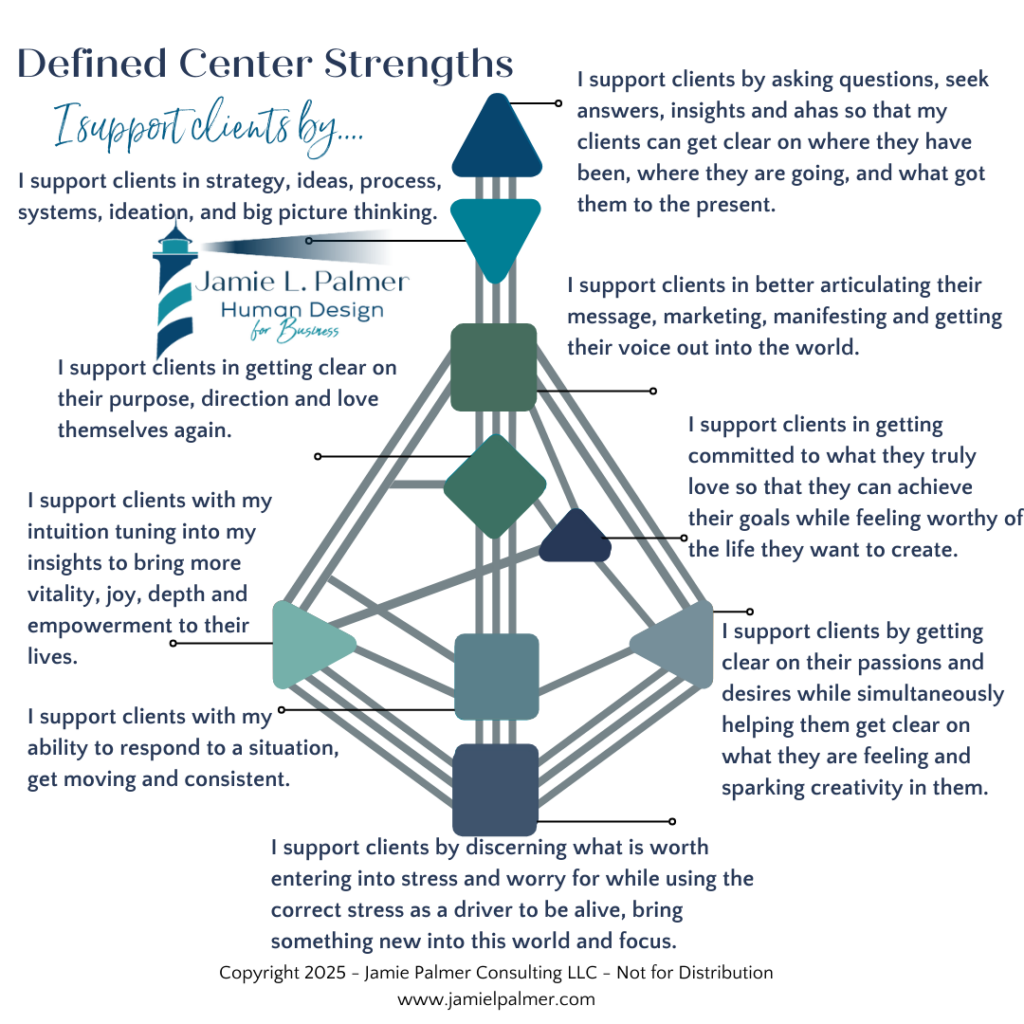
The Full Transcription – Bridging the Gap – Magnetizing Your Ideal Client & Your Expertise with Human Design
Jamie Palmer (00:02):
Hello, hello, hello and welcome to the HD or Biz podcast. I am your host, Jamie Palmer, and I am super excited to talk to you today about speaking the language of your potential client using your human design. So one of the things that I experience most frequently with clients who come into my world is that they are often in this space of they have the expertise. They’ve often tried to launch a course or a program and it’s often fallen flat or it hasn’t gone as well as they thought it would be, or they’re fully bucked out in their practice, right? They’ve got a one-to-one practice and they want to start to transition out of that one-to-one practice. But ultimately, they are struggling to sell when the business isn’t coming from a referral because primarily their business has been by referral or people actively searching for the thing that they have to offer.
(01:21):
And so when we think about this, I kind of think about this as there’s two camps and there’s overlap in those two camps. So we have the expert whose business is primarily developed through referral or people actively searching for the thing that the expert has and or there’s these people who are experts who are looking out of the marketplace going, I’m more qualified than this person who’s doing X, Y, Z, and I need to transition my business into more of a one to many model because these people who aren’t as qualified are having more success than I am. And maybe it’s coming from a place of fomo, but oftentimes it’s also as a result of like I want to scale too because kind of running out of time. And so the problem that I have found, and one of the things that I support a lot of my clients with is this.
(02:28):
Am I wearing my expert hat or am I wearing my, for lack of a better term, marketer hat? And if we think about this in our own industry, it’s really easy to look out at the industry and see that experts tend to speak their expertise, they speak the language that they know so well, the stuff that they can kind of do in their sleep that they take for granted that they’re brilliant at. And then there’s marketers. Marketers are really good at selling, but they aren’t necessarily as good as the delivery aspect. They probably won’t get you the same transformation as an expert would, but the problem is the expert doesn’t, their language doesn’t necessarily translate to the potential client. And so the potential client goes to the marketer because they’re speaking the language of the potential client. And so I want to first just name that it’s important to understand that this does not mean that you’re doing any sort of bait and switch.
(03:50):
However, I’ll use human design as an example here. If I show up to an event and people don’t know what human design is and I start talking about strategy and authority and defined and undefined centers, I might as well be speaking a foreign language. And I think this is often what happens to people who have a level of depth and expertise. This is just their normal language. And ultimately, unless you are getting a client by referral or a client who’s already done the research and the homework to understand that language, or at least have some understanding of that language, the potential client’s going to go to the person who’s speaking their speak. And so let’s continue with human design as an example, right? So say you are having an issue where you are feeling like you have imposter syndrome. And if I’m saying, look, we can use your human design, solar plexus, this, that, the other, your defined centers or your undefined centers, and I’m talking all in this human design lingo and I’m saying we can use that as a way to treat your imposter syndrome.
(05:19):
And I’m spewing all this human design language to you. The person’s probably not going to buy from me unless they were a referral. And if they were a referral, they’re going to buy from me because they trust the person who referred them and they know that that person got the results or that referral that introduced The two is like, is it trusted source? And they’re like, yep, I’ll just hit the I believe button. Whereas if it’s not by referral or it’s via a sales page, if I’m talking all about how your defined and undefined centers can give us a compass to determine why you have imposter syndrome, and I’m talking about being in detriment and honoring your strategy and authority, if I’m not selling to someone who’s human design aware, I might as well be speaking a foreign language. And so one of the things that marketers air quotes for lack of a better term, do really well, is they meet that client where they’re at and they say things like, if you’re tired of feeling insecure, if you’re tired of walking around feeling like you’re going to get found out that you aren’t the expert that people think that you are, we can help.
(06:51):
And here’s how that is an entirely different way to sell to that person because I am removing my technical language with whatever expertise comes with that. And so the thing that we really want to understand or I want you to understand is that if you want to sell to more people, and I believe most of us want to sell to more people to make a bigger impact, if you want to sell to more people, you have to actually speak the language of what your potential client is talking about. And one of the things that people always comment and say to me, they’re like, well, Jane, how did you get inside my head? And it’s because I’ve been doing this work for so long with entrepreneurs in general, it will be almost 22 years in September that I’ve been working exclusively with entrepreneurs and startups, and I’ve been doing the human design stuff now for almost studying for six years and doing it with clients for five years.
(07:58):
I have heard all the things that come up in people’s head. I don’t need to necessarily spew human design stuff to people. I can simply talk about it through the lens of the things that they’re experiencing. Now, that’s not to say I don’t do that. I have my HD Wild Human Design Training program, but when I’m working with people in the hd, your business ecosystem where I’m supporting people and building a business by design, I don’t always necessarily have to speak that human design language. And so when we think about this, we can actually use our human design almost as a translation for our expertise. And this is something that I do inside the Ideal Client Workshop, which now comes with the Ideal Client Report. This is going to be part of my new book that’s coming out, the Human Design Client Compass. And ultimately, when we think about translating our expertise, we can use the defined centers in our chart almost as that translator to meet the client where they’re at.
(09:18):
We simply have to understand what’s that first problem that we solve for clients. And so I’m going to run through this real quickly, kind of just how the Define Centers support different clients. If you want more on this, I invite you to join me in the Ideal Client Workshop. This is something I’m going to be actually running live every month for the next couple of months, and there’s an on-demand replay already, and it comes with an amazing I Ideal Client report. So it’s got all your information inside one document for you. But again, this isn’t to sell you on that, it’s just to talk about that. If you want to dive deeper, it’s there for you. So when we think about our defined centers, we want to think about how our defined center supports the work we do or is the translation for the work that we do.
(10:21):
And so I’m going to run through the nine centers, and then I’ll use myself here as an example. So if we look at the define head, the define head supports clients by asking questions, seeking answers, insights, and ahas so that client can get clear on where they have been, where they’re going, and what got them into the present. The Define Ajna supports clients in strategy, ideas, processing systems, ideation, clarity, certainty, and big picture thinking. The defined throat supports clients in better articulating their message, marketing, manifesting, and getting their voice out into the world. The defined Identity Center supports clients and getting clear on their purpose, direction, and self-love and loving themselves and their place in the world. The Define Heart supports clients in getting committed to what they truly love so that they can achieve their goals while feeling worthy of the life that they want to create.
(11:20):
That defines spleen supports clients with tuning into their instinct and intuition so that they can bring more vitality, joy, depth, empowerment, and thriving into their life. The defined sacral supports clients with their ability to respond to a switch situation, get moving and consistent, and be a partner without the baggage. The defined solar Plexus supports clients by getting them clear on their passions, desires, while simultaneously helping them get clear on what they are feeling and sparking creativity in them. And the defined route supports clients by discerning what is worth entering into stress for while using the correct stress as a driver to bring more momentum, focus and something new into this world. So if I were to use myself here as an example, so much of what I do, particularly in my human design for business ecosystem, I kind of look at my business as I have two ecosystems.
(12:24):
I have the H two ecosystem, and then I have the Ecocentric human design ecosystem. And while there’s overlap, right, some people want to come train and study human design in my approach, and then others just want support in their business. And sometimes there’s overlap in both of those things. Some of my people who do training with me want support in building their business, and some of the people who are building their business by design end up wanting to come learn from me. And so in my human design for business ecosystem, one of the things that I really believe my job is, is to educate people on the options that are available to them in their business. And I believe that then gives them more certainty. It clears kind of that fogginess in their brain and helps them create a strategy and a process for moving forward.
(13:28):
I would contend that much of my work is in this 1000 to 30,000 foot thinking. I really help people figure out what’s that big picture for my business, and then what are the steps to focus on in order to get there? And I really try to oscillate between this 1000, 10,000, 30,000 foot view to help people move forward. And we do this by design, but ultimately, if I’m coaching someone or I’m doing strategy for someone, I don’t necessarily need to teach them all the elements of human design I do, because I think that that’s important. But I don’t have to. I’ve actually done this where I haven’t actually said, oh, you’re an emotional authority, dah, dah, dah, dah, dah. I’ve said 80% certainty is a decision for you. And if you’re waffling, that’s a no. And so I want you just to understand that I can use my defined centers to articulate my expertise without using my expertise language.
(14:47):
And I think this is the thing that’s really important to understand with human design. And this gives us a way to connect to other clients without having to use all of our techno lingo. Let me use another client as an example. Here I have a client, she helps people come up with a capsule wardrobe. She does color analysis, which is basically helping you pick your best colors. And she really helps people with the mindset around buying and having a wardrobe that feels great so that they can love themselves again. And she’s brilliant at what she does. And if she decided to say, I’m going to sell you this color season palette, let me do my color analysis on you.
(15:46):
People don’t know what that is. But in order to speak to the potential client, the way in which she could do this is to say, don’t you want to buy the colors that you look best in? And when you buy the colors that you look best in your wardrobe and you have a uniform and a wardrobe that you love, you’re going to be able to love yourself again. And so she’s speaking through that defined identity center center, but she’s speaking it in a way that the person can actually understand. She could come in and say, deep autumn, deep winter, cool summer, light spring, there’s 12 different names for these color seasons. But that presumes, you know, need color analysis. And this is where these subtle tweaks in your languaging can really open up your marketing to a whole bunch more people. And it also takes it from people who are solution aware in this case is somebody knows that color season exists to people who are problem aware.
(17:16):
I bought this shirt in the store and the color doesn’t match me, right? I got at home at home and I just look meh in it, and I don’t know why I look meh in it. And we’ve all done that, right? We’ve all bought something. We’re like, Ooh, I love this color. We buy it, we get it at home. And we’re just like, oh, this does not look good in me. And there’s a massive difference, though, in the amount of people that she can speak to if she’s addressing the problem aware people versus she’s addressing the solution aware people. And so when we think about this in your business, I really want you to start to think about what is that problem you solve for people? If you were to zoom out a little bit, right? What’s that first thing you solve for? And I want you to start to think about it through your defined centers, and we can use those defined centers to act as a translator to speak more easily to our potential clients.
(18:18):
And like I said, if you want to dig deeper into this, I invite you to come into the Ideal Client Workshop. It’s Ideal Client design with human design.com. And as part of this, you get the report and you get to come to a q and a and you get to attend any of the Ideal Client live workshops that I do for the entirety of the year. But I really believe, and I have so many clients leveraging this process, that their businesses have dramatically changed as a result of being able to look at their potential clients through this lens. And I have a process for critiquing people through this. And we don’t just look at the centers, we look at all several other parts of the chart. We also look at the gates and the channels that are present there. And like I said, there’s a whole process around this. But I want you to start thinking about how can you step out of that expertise hat so you’re not speaking a foreign language to your potential clients, and how can you start meeting those potential clients where they are at? So thank you so much for tuning in. I super appreciate you being here. If you enjoy this content, please do be sure to leave me a review. Those reviews, let me know what kind of content is actually resonating. And thank you so much for tuning in, and we’ll see you on the next show. I.
Digging Deeper into Human Design Education:
If you like this human design content and want to dig deeper check out these other human design articles.
- The Do’s And Don’t of Marketing By Type Featured Article on Entrepreneur.com
- My Journey With Human Design
- The 1/3 Profile In Human Design
- Introduction to Profiles in Human Design
- Human Design Projector
- Human Design Manifesting Generator
- Human Design Generator
- Human Design Manifestor
- Human Design Reflector
- Authority in Human Design
- Human Design For Business
- The Voices of the Throat Center – Marketing for Human Design
- HD Your Biz Podcast
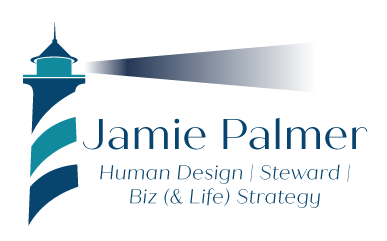
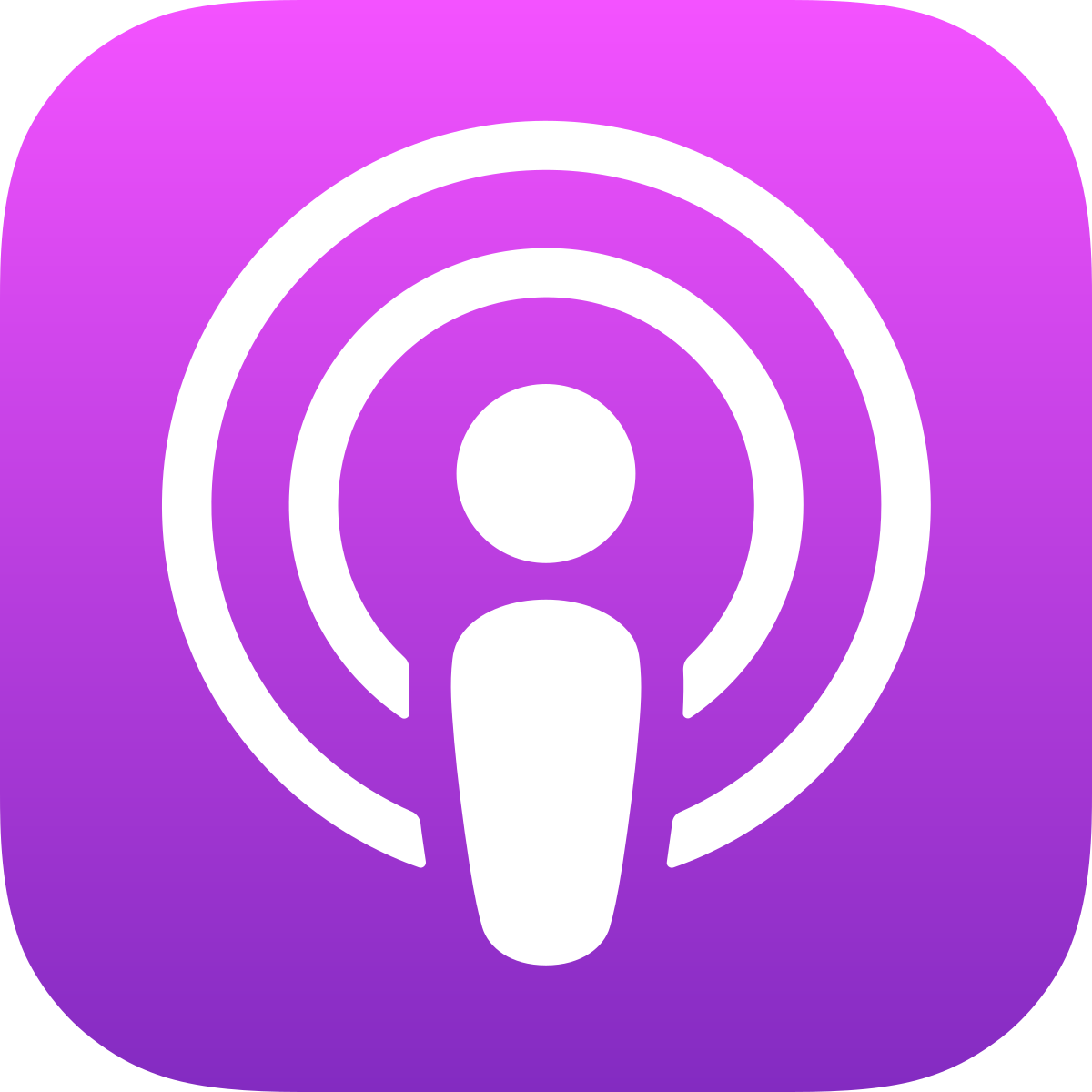






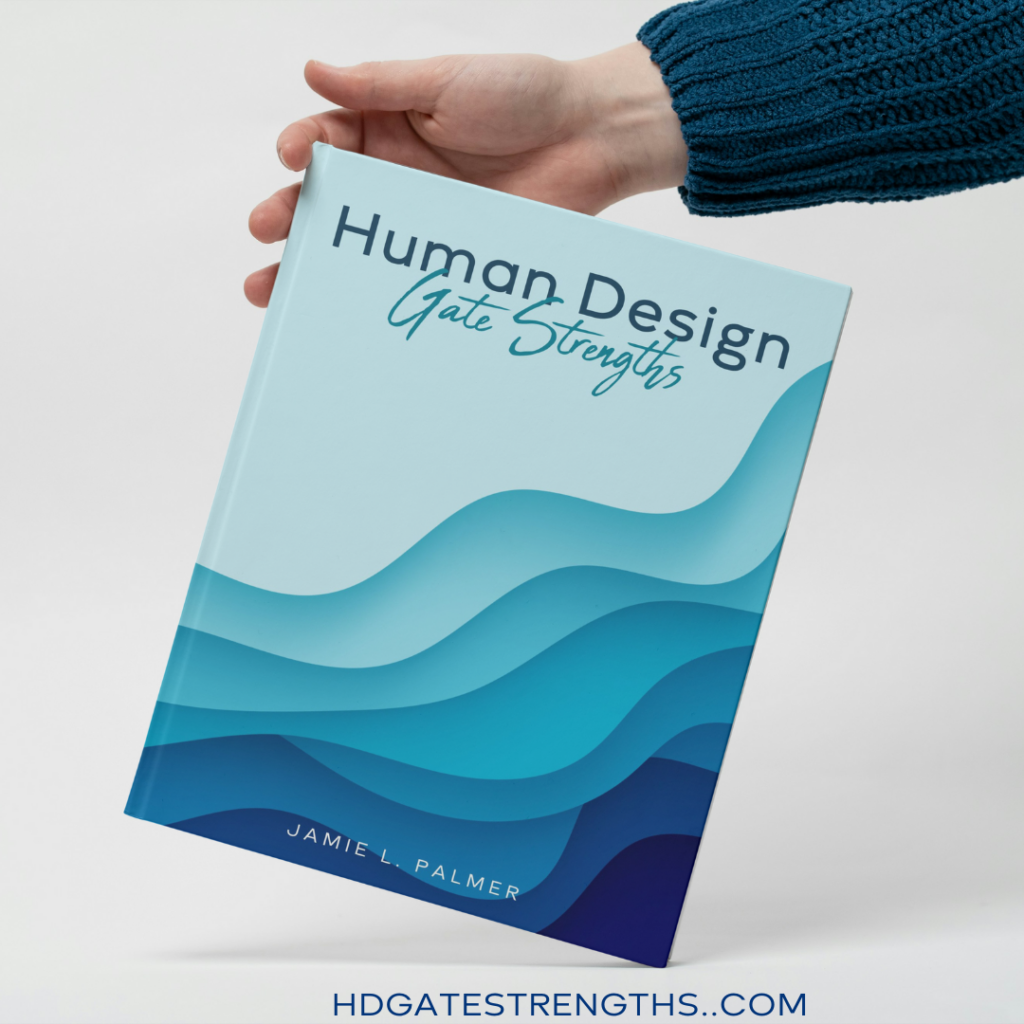
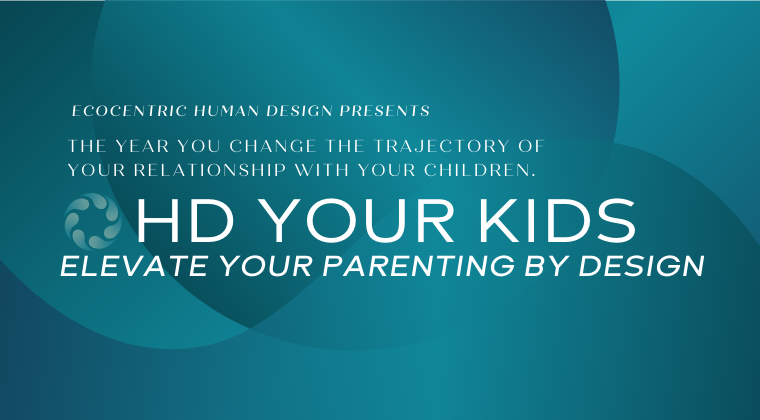
Recent Comments